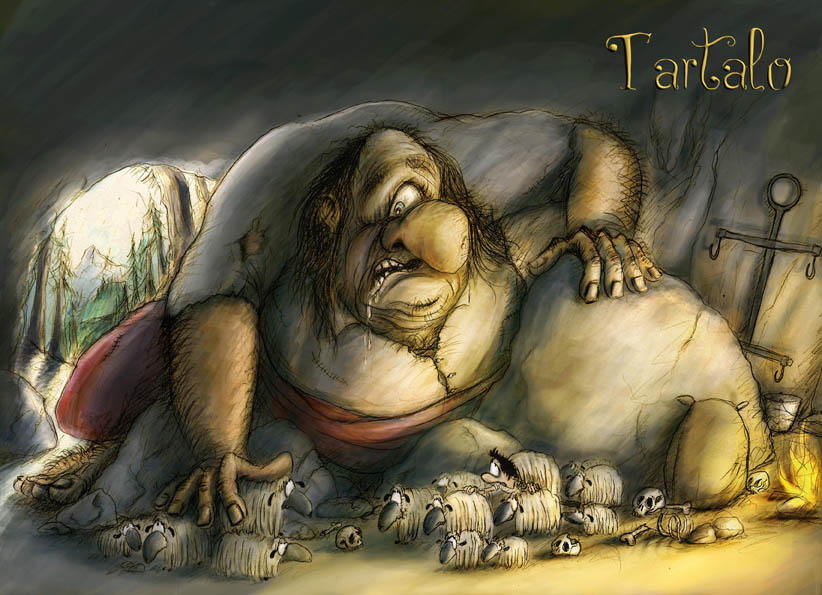“And saying that, he [the Tartalo] grabbed the elder brother, put him on the side of a roasting fork, and stuck him on the fire, then he ate the elder brother in front of the horrified eyes of the younger.” The Tartalo, the Basque cyclops, was by no means friendly. As opposed to other mythological beings who, in the right context, might aid humans, the Tartalo was always nasty and evil.

- Tartalo, which also goes by the names Tartaro, Torto, and Alarabi (in the Markina region of Bizkaia), is a cyclops, having only one eye. While different versions of the creature exist in different parts of the Basque Country, there are a few traits they all have in common. They are extraordinarily strong. They live in caves where they keep their flocks of sheep. They are particularly fond of eating Christians whenever they have the chance.
- Depending on where you are in the Basque Country, however, the Tartalo’s characteristics and personality do change. In some places, he is a solitary creature, but in others, he takes a wife. Even if married, though, they still live isolated, away from other Tartalo. According to some tales, the Tartalo is the first shepherd.
- Most stories of the Tartalo involve him capturing an unsuspecting man or boy. Sometimes he captures two. Taking them to his cave where he stores his flock of sheep for the night, he eats the first man. The second finds a way of blinding the Tartalo, but still cannot escape as the Tartalo guards the entrance. The man tries to hide himself amongst the sheep as the Tartalo lets them out the next day to graze. The man usually escapes, but a ring the Tartalo has placed on his finger calls out “Here I am!” so that the Tartalo can chase the man down. In a panic, the man cuts off his finger and throws it into a well, which the Tartalo, hearing the ring, ends up falling in and drowning.
- Of course, the legend of the cyclops is not uniquely Basque. In the stories of Homer, Odysseus was captured by a cyclops and escaped his cave by blinding the monster and stealing his sheep. Similar stories, in which the hero blinds the cyclops and flees with the monster’s sheep, can be found in Basque folklore, in other parts of the Pyrenees, and even in Africa. A unique aspect of the Basque version is the presence of the talking ring. There is some speculation that the story was originally told to explain the development of the cowbell, which the hero steals from the Tartalo.
- It doesn’t seem that the Basque version is inspired by Homer. The true origin of the story of the Tartalo or, more generally, the cyclops has been lost. But, they are often connected to or confused with Jentilak as beings that constructed dolmens. While stories of Jentilak often depict them as good beings, Tartalo are always bad or evil.
Primary source: Hartsuaga Uranga, Juan Inazio. Tártalo. Auñamendi Encyclopedia. Available at: https://aunamendi.eusko-ikaskuntza.eus/en/tartalo/ar-139122/


